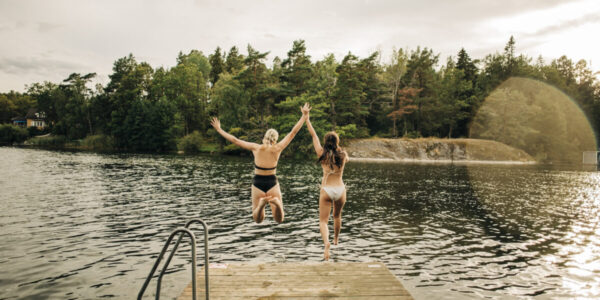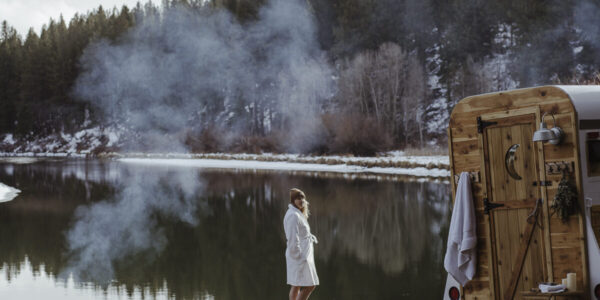
Wine Sales Are in Decline—Here’s How Western Wineries Are Reaching Younger Generations
Every bottle has a story—and everyone’s invited.
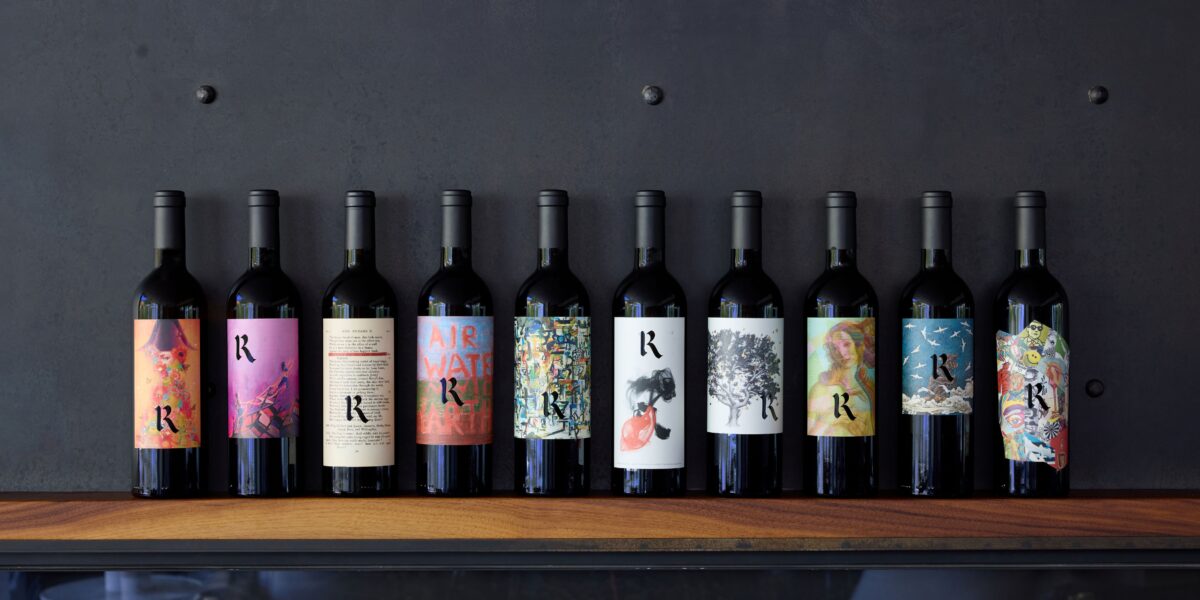
Courtesy of Realm Cellars
For many younger wine drinkers, ordering wine off a wine list can feel like decoding a foreign language—no one wants to feel pressure at their restaurant table trying to order the “right” wine for their meal. And that’s exactly what the industry hopes to change. Wine sales have been on a slow but steady decline in recent years, leaving wineries with the pressing question: How do you capture the attention—and the palates—of the younger generations of taster?
The State of Wine Sales
The landscape of wine consumption is shifting between generations—younger consumers face an endless array of beverage options. New craft beers, spirits, hard seltzers, and non-alcoholic alternatives seem to pop out every other week. Coupled with cultural shifts and changing habits, wine faces stiff competition.
The problem lies in the fact that the Gen-Z and Millennial generations are not yet replacing the wine drinking rates of the Baby Boomers. According to Silicon Valley Bank’s 2024 State of the US Wine Industry report, only about 20% of wine consumption in 2024 came from people under 40.
Despite decreasing wine consumption, winemakers across the West are not worried—they are confident the unparalleled experience of wine will speak for itself.
What Younger Drinkers Actually Want
Lindsey Reed, a wine expert local to Santa Barbara, California, is all for spreading wine education. Growing up around the food and drink industry, Reed fell in love with wine and never looked back. Combining her restaurant experience with her geology degree, Reed is passionate about the intricacies of wine’s production—and the beauties of its experience.
Reed runs the wine bar at Aperitivo, a must-try cozy Italian restaurant in the heart of Santa Barbara, and also teaches a wine appreciation and tasting course offered through UC Santa Barbara that is offered for anyone. Her goal? Demystify wine.
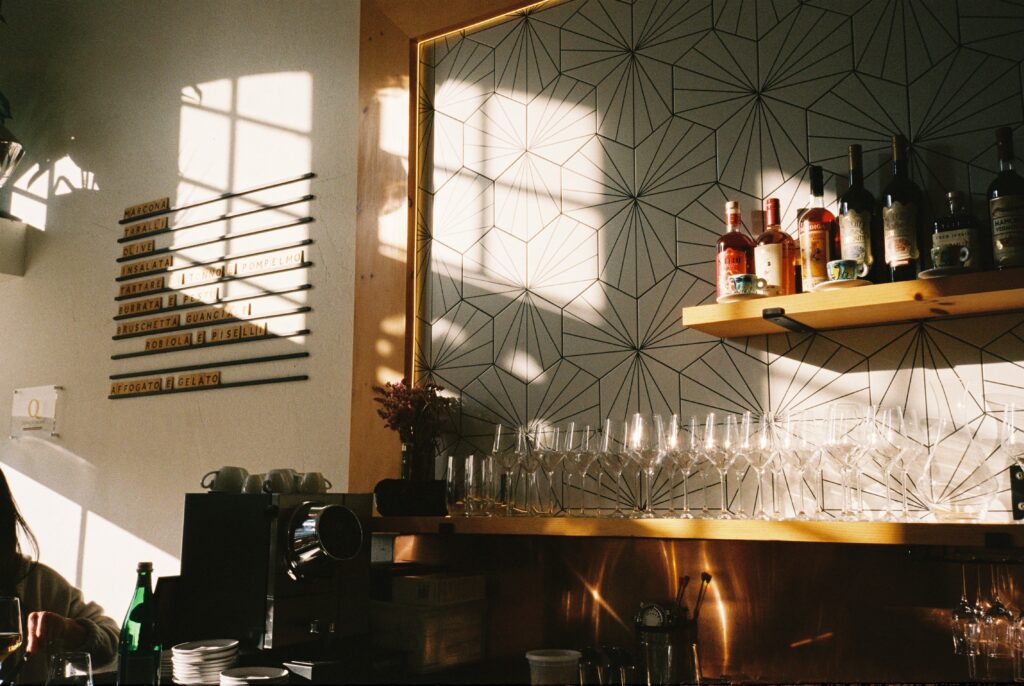
Courtesy of Lindsey Reed
“We need to slowly make the wine industry an inclusive and educational place—and start it young,” said Reed. “I just want people to be able to say, ‘This is what I like.’ And order it.”
To Reed, one of the bigger issues in the wine world is its prestige and elitist culture among many high-end wine buyers.
“Wine shouldn’t just be this high-end experience. It should be sitting at a table with friends and family, enjoying what’s in front of you,” said Reed. “That’s the heart of it.”
Patterns among her students and across the wine industry show younger drinkers are leaning towards lighter bodied, lower-alcoholic wines. Reed noticed a clear shift—from 15-16% ABV bottles to those between 12-13%—with a rise in interest in white wines or wines with a fun, unexpected flavor profile. Most notably, she says, they prefer wines that are ready to drink now, rather than waiting years for them to age.
And for Reed, making wine more approachable isn’t about dumbing it down—it’s about inviting people in. The simple shift—towards confidence, clarity, and narrative—is exactly what many wineries across the West are starting to embrace.
Sharing the Story Behind Wines

Courtesy of Lange Estate
At Lange Estate Winery, sitting in the terroir-rich Dundee Hills of Oregon’s Willamette Valley, storytelling is just as essential as crafting their estate-grown wines.
Known for their iconic Pinot Noir, the family-run winery also specializes in Chardonnay and Pinot Gris. Second generation winegrower and winemaker Jesse Lange believes the future of wine heavily lies in reconnecting people to the personal and emotional core of the beverage—from its history to the delicate farming process.
“Our trademark phrase around here is ‘It’s your palate—it’s your party,'” said Lange. The mantra reflects the winery’s ethos: Wine is your own unique experience.
To Lange, just one sip captures a moment, a place, a process, and an experience that cannot be replicated in trending canned beverages today.
“Every craft-bottle of wine is a singularity,” said Lange. “It’s a liquid time-capsule that captures a sense of place and specific conditions that will never be replicated again.”
And he’s not alone in that view. Expert Lindsey Reed sees younger drinkers-especially her students—light up when they realize there’s a story in their glass. “When you give something a story you give it life, and a taster will love it that much more,” said Reed.
For Lange, wine’s allure and unique complexity is unmatched. The viticulture behind winemaking is a prime example of the sustainable and organic farming that resonates with the younger generation, and according to Lange, is what needs to be exemplified more in the industry.
“Wine is the most ancient, complex, and delicious beverage on the planet and therefore the most compelling,” he said. “It’s not even close.”
From the Lange Estate’s 800-foot elevation winery and tasting room overlooking the snow-capped Cascades, Lange hopes visitors will see wine not as something exclusive or intimidating—but as a shared experience in beautiful places grounded in inclusivity and community among your friends and family.
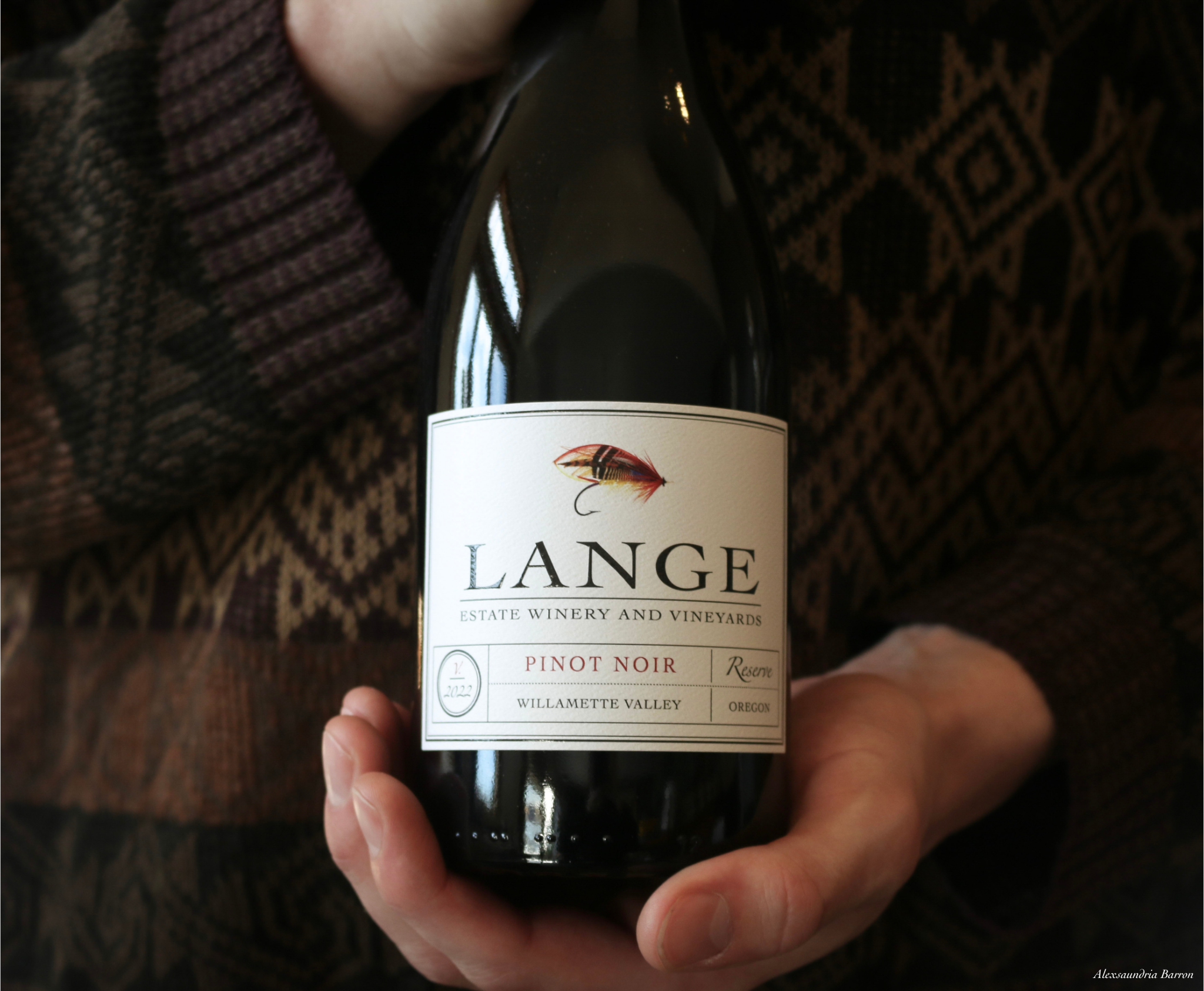
Courtesy of Lange Estate
Visual Strategy

Courtesy of Realm Cellars
Once on the brink of bankruptcy in 2012, Realm Cellars has since become one of Napa Valley’s most electrifying wineries. Under the leadership of new owner Scott Becker, the winery has expanded its production, now operating three estate vineyards and growing its presence in the region.
“If you look at Napa Valley, a lot of its growth was fueled by the Baby Boomer generation and the way that they engaged with wine,” said Becker. “That generation is starting to get older, and we started noticing a decade ago that you were going to start to see older customers with wine cellars to buy less as they drink less.”
Because of this shift in consumers, Becker’s main focus now is to engage with Gen X, Millennials, and Gen Z. The biggest issue separating younger generations with wine is primarily in price and accessibility. The wine critic scores from spectators like Robert Parker were driving forces for wine sales in the Baby Boomer generation—but this is no longer.
“The younger generation is not looking for a score—that’s too reductionist, too simple,” said Becker. “They’re looking for more of a connection or a story because wine has always been a social experience.”
To foster that connection, Realm has embraced vibrant label art, commissioned from contemporary artists to reflect the identity of each wine. “The art has to tell the story of that wine going back to its authenticity,” said Becker. “It’s not just a pretty picture.”
The winery has also leaned in experiential marketing, forming a small in-house group dubbed Realm-X to bring their wines to different people and places—tailored for a younger, culturally curious audience. Their tastings at Realm North, for example, provide an intimate and spacious tasting space overlooking the Vaca Mountains.
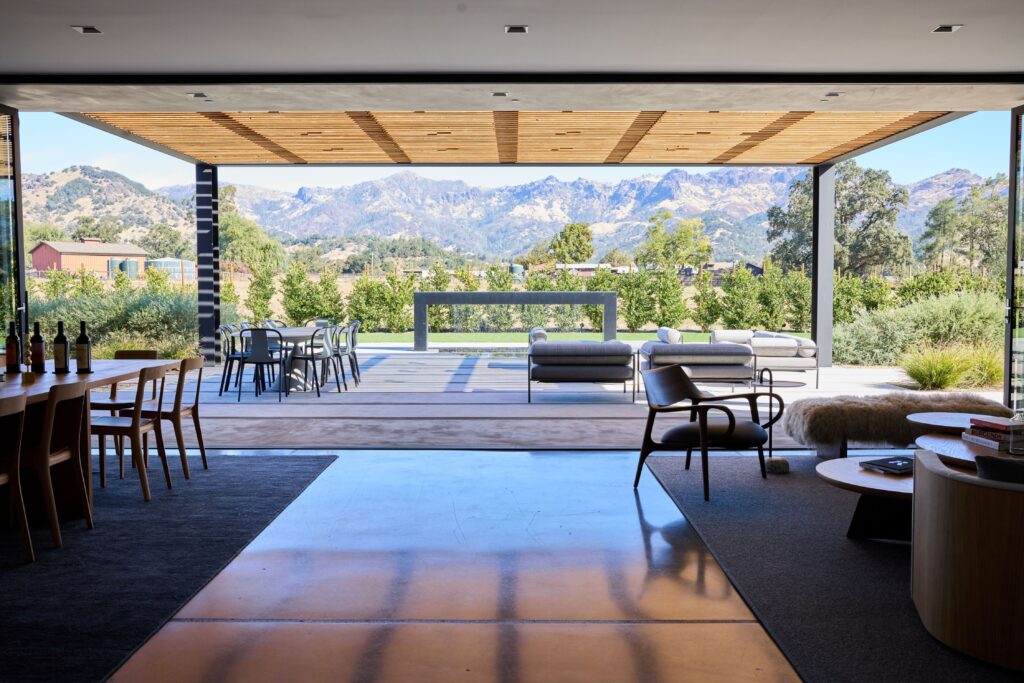
Courtesy of Realm Cellars
“We’ve done some partnerships with art galleries… we did a wine tasting and watch try-on event with Bezel… and we’ve done BottleRock, which is obviously more of a music festival than it is wine tasting,” said Becker. “If you’re curious about wine, then chances are you might be curious about art or music or food… wine has an element of all of those things.”
This ethos extends to product development, too. Realm recently launched half-bottle formats—a lower-commitment way for younger or newer drinkers to explore high-end wines. “They might be like, hey, I don’t know the wines—they’re kind of expensive—but I haven’t been able to taste them,” Becker said. “So is there a half bottle I could just buy as a lower entry point just to check out if I like these wines.”
With adapting tactics like these, and a customer-focused approach, Becker overall hopes to reshape the perception of wine itself and engage drinkers in the serious craft of wine making—and get rid of elitism.
“Fundamentally, winemaking is farming. This is nature. This is agriculture,” said Becker. “I realize there is alcohol in the beverage, and we have to be mindful of that… but it is as close to food and as close to a natural thing as I think exists.”
Some guests may geek out over tasting notes, others fall for a striking label—and both reactions are welcomed. “You can engage with it at whatever level you want,” Becker said. “And I think that’s what we should try to encourage people to do.”
Emphasizing the Wine Experience
At Angler, a Michelin-starred restaurant in San Francisco, sommelier Robert Lozelle sees the wine industry already flipping away from an elitist narrative back to “normalcy.” To Lozelle, the pendulum is swinging back to a larger interest in craft wines—and customers are valuing quality over quantity.
To keep the younger drinkers engaged, Lozelle points towards the importance of selling the wine-drinking experience. “We’re competing with the younger generations’ alternative forms of entertainment,” said Lozelle. “People are opting out of going out on a Friday or Saturday night; as an industry we have to be able to offer an appealing product in those regards.”
A tactic to use to create this appeal? Lozelle says technology. Platforms like TikTok and Instagram offer a direct, visual way for winemakers and sommeliers to share the story and meaning behind each bottle, and Lozelle sees an influential presence on his social media already.
As the younger generations continue to shape wine culture, the path forward is less about reinventing the product and more about changing how it’s presented. Whether through storytelling, casual tastings, or embracing online platforms, the message is clear: Wine is no longer just about a “score”—it’s about value, presence, personality, and participation.
Read the 2024 Wine Issue Right Here!
Get one year of Sunset—and all kinds of bonuses—for just $29.95. Subscribe now!
